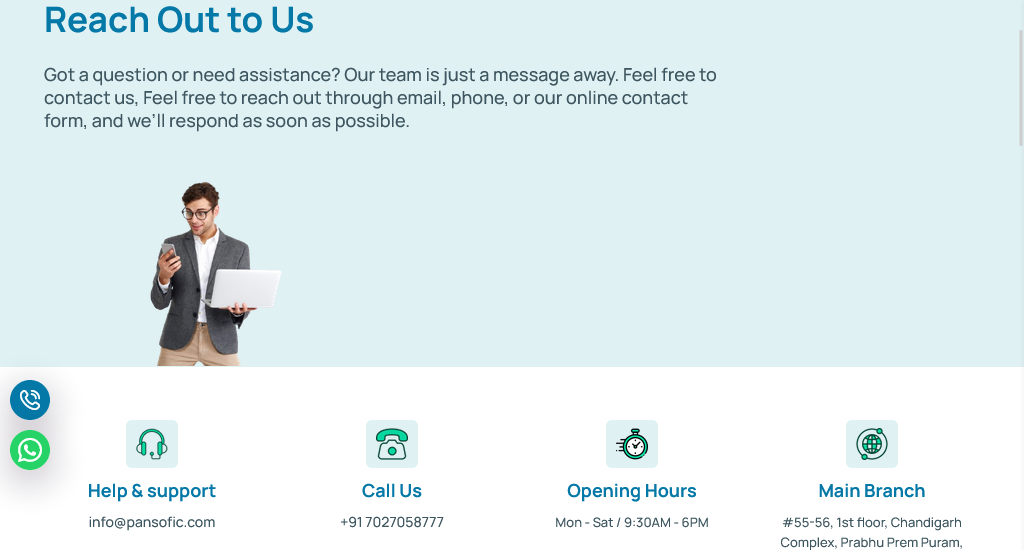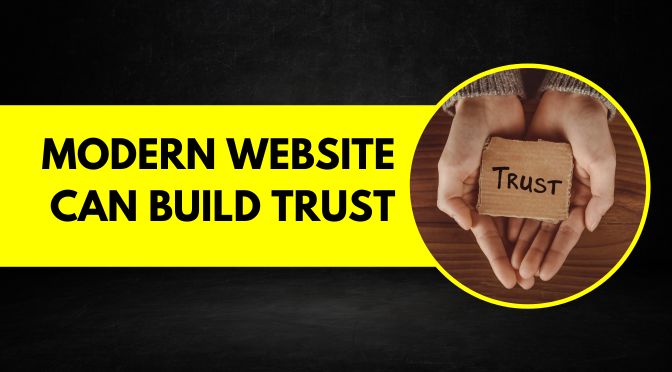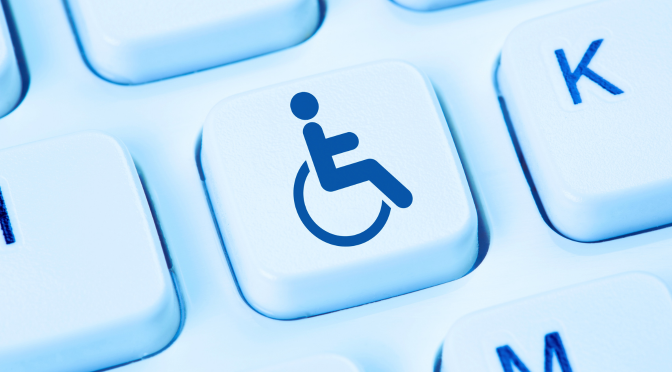Your website is often the first thing people see when they’re interested in you and your company. That first impression and how it looks matter. People tend to form lasting opinions based on that initial glance. If your site looks outdated, cluttered, and untrustworthy at first glance, users will likely click away quickly. That means your bounce rate will soar.
A well-designed website that’s both safe and easy to use- and looks great- can help establish your brand as legitimate and trustworthy. When your potential clients feel at ease on your site, they’re more likely to click through to conversion and become loyal clients down the line.
That’s a pretty sobering statistic: 75% of consumers judge a business’s credibility based on its website design. That means your website is not just an ecommerce site- it’s the foundation of trust. And that foundation needs to be solid.

Credit: freepik.com
In this article, we are going to talk about how your site can help foster confidence in your brand. We will cover a few important facets: web design, content, performance, security, and most importantly user experience, and we are going to provide some ways to get it right.
1. First impressions and visual design
A. Look professional
A modern web design is professional, minimalistic. Your visitors will make an impression of you in 0.03 seconds; good news is that you can control that impression (to some extent). That one impression will decide whether they will stay on your site or leave for another. A site that looks professional means the company is doing ok today, pays attention to details, and cares about their work.
An example of a site with a clean, organised, and consistent design that meets the quality standards is Apple’s website.
B. Uniform branding
Consistent logos, colors, fonts, and visuals to build familiarity with your brand. Users are building impressions based on what they see, so when they see the same visual over and over again, familiarity and trust are built.
Tip: Marq (formerly Lucidpress) did a study in 2025, found that companies with a clear branding identity see an increase of about 20% overall.
C. Mobile responsiveness
According to Statista (2024), more than 55% of the world’s web traffic is generated from mobile phones, so responsive design that works well on phones is a must. A modern site should adjust and adapt to varying device dimensions and proportions so users can have a good experience no matter what device they are using. That is why many businesses are now turning to AI website builders to automatically generate mobile-friendly layouts. All without needing the help of a developer.
2. Performance and speed
A. Speedy load times
Speedy load times tend to keep users engaged for a longer time. Even a single second of delay may result in a slump in sales.
For example, Amazon found that a delay of only 100 milliseconds decreased their sales by 1%.
B. Improvements in images and coding
Websites now are using efficient images and stripped-down code to be efficient. Using lazy loading, CDNs, and caching can speed things up and make for a more streamlined and quicker browsing experience.
3. Security and privacy
A. HTTPS and SSL certificates
Essentially, when you serve your site over HTTP, somebody could have tampered with or leaked on that connection, and therefore any data being transmitted between users and your site would be insecure. To mitigate against this risk, modern websites should use HTTPS, which encrypts the user data as it travels between browsers and websites. An SSL certificate is needed to do this.
People are becoming increasingly aware of their privacy online. Websites that use HTTPS help to secure the data between your browser and the server. Google has started to include HTTPS as a ranking factor in its results, and most search engines now alert users when a site (HTTP) is not secure.
B. GDPR compliance and clear policies
You should have clear privacy policies and abide by laws such as GDPR or CCPA, it gives the message that your brand takes care of the user data and search engines should definitely trust you but also possible clients. A Cisco report says that now, 84% of customers are concerned about data privacy and 48% have actually switched companies because their practices weren’t acceptable.
4. User experience
A. Easy navigation
Users need to be able to get the information they need. Clear instructions, good layout, and a search bar make it simple.
B. Inclusivity
Modern websites need to be designed for everyone, including those with disabilities. That means being WCAG compliant, using alt tags on images, ensuring voice search is optimised, and people are able to navigate through your site using only the keyboard.

Technology illustrations by Storyset
C. Engaging features
Most of the contemporary websites nowadays are now days adding some fun features like chatbots, animations, and visual effects, which will give you the experience to interact with it, have fun, but still they don’t fail in functioning.
5. Quality content
A. Clear communication
Make sure visitors can see who you are, what you do, and why that’s important to your visitors. Keep it simple, and just get to the point.
B. Informational resources
Blogs, video content, and guides can show expertise and provide value. In this way, you make your brand a credible source in your industry.
For example, HubSpot used its blog and freely available content to build trust in digital marketing and received millions of visitors monthly.
C. Reviews and case studies
Customer reviews and case studies build trust. People are more likely to choose you when they read good things about the experience of others.
According to the Bright Local study of 2025, 75% of consumers are always or regularly checking reviews online in the process of selecting local businesses.
6. Transparency and authenticity
A. About us and team
Not only does highlighting your employees add a personal element, but being transparent about you and your values establishes a connection with your audience.

Credit:pansofic.com
B. Contact information
A phone number, actual address, and forms of contact helps you stand out. The more ways that people can connect with you makes your brand feel more credible.
C. Trust symbols and certificates
Anything that advertises an award or any certificates that are proof of industry excellence, payment badges, or security logos will make users feel more at ease, particularly on checkouts or contact forms.
For example, there are many websites that display security logos from trusted security companies (for example, Norton or McAfee). A Secured by Norton logo will be found on websites that process sensitive user information.
7. Social proof and engagement
A. User-generated content (UGC)
When you have user-generated content on your site, such as pictures or reviews, it creates a community feel and shows that others have invested their trust in your brand.
B. Social media integration
Engagement features such as live social feeds, share icons, save counts, and follower counts make it easier to connect with those features and show your brand activity within the community.
C. Social media/Influencers recommendations
Advocating for partnerships with influencers on your website or social media channels boosts your credibility, particularly if you are in an industry such as lifestyle, beauty, wellness, or food products like natural honey.
8. Conversion optimisation using trust signals

A. Clean calls to action (CTAs)
Use simple, definite calls to action. Examples could be “Start Free Trial” or “Get A Free Quote.”
B. Refund policy and return guarantees
A clearly stated return/refund policy can make users feel safer, and that can enhance your overall conversion rate.
C. User onboarding and support
Offering guided help (such as tutorials or live customer support) can show users that you care about their success and satisfaction.
Think of companies like Notion or Slack – both have excellent onboarding tools to get users started right away and gain their trust from the get-go.
9. Data and analytics for measurement of trust indicators
A. Bounce rate and time on site
A very high bounce rate indicates that site visitors are not finding your site of interest or trust. Tracking bounce rate and time on site allows you to know what needs to be fixed. You can change the design of the site and make it more interactive.
B. Customer satisfaction surveys
User comments will let you see what you are doing well and how you can do better. If you can not satisfy customers, you cannot expect to survive. Recently 90% of US businesses are closing, due to competition within a short time span.
C. A/B testing with trust features
Testing different elements of trust in the website, testimonials position for example (Placement at the top of the web view or button of the site), or the exact wording of (Call to action, Get Free PDF for Best Tools For Web Design) can ultimately make your site more trustworthy and increase conversions.
Conclusion
An up-to-date site is more than just a marketing tool for products and services; it builds credibility and overall customer experience. With a commitment to security, content, user experience, and design, companies can leverage all of the useful components of a site to be a key mechanism for building long-lasting relationships and/or lead generation.
In a rapidly changing world, so are user expectations. Credibility is not a one-off commitment. It is a long-term commitment to transparency, credibility, and user-focused activity. In an increasingly busy marketplace, to stand out from the competition, credibility needs to be at the forefront, and your site is the foundation of that credibility.
Trust does not happen overnight. But with a site that lives its values, provides honest value, and is user-centric, it will show your relevance over time. Let your site be that firm handshake that will resonate with your audience for the long term.
Frequently Asked Questions (FAQs)
What makes a website important in generating brand trust?
Your site is most likely to be people’s first exposure to your brand. A responsive site with modern design gives the impression that you are serious and credible and locks in potential customers.
Does website design impact trust when using the site?
Studies have shown over and over again that users make judgments about a website in seconds or even milliseconds. Giving customers a clean layout, consistent branding, good navigation, and a responsive design all goes towards a good first impression and establishing credibility.
What are some trust signals on a site?
Some of these are:
- SSL Certificates (HTTPS)
- Verified payment icons
- Customer reviews and testimonials
- Clear contact information
- Social proof (user-generated content or publicly displayed follower count)
- Privacy Policies and Terms of Service
How does content build trust?
They show that the brand understands its subject matter and cares about helping users with high-quality, helpful, and honest content. A good content strategy contains all types of content, such as case studies, FAQs, blog posts, and about pages.
Does the speed of a website affect trust?
Of course, slow websites frustrate visitors and usually have them leave within a second or two, which of course can damage trust. Faster load speeds improves user experience and proves that you care about performance.
How important is mobile responsiveness?
Mobile responsive is incredibly important because over half of worldwide internet traffic is via mobile devices. Responsive layouts ensure that users can have an enjoyable experience, no matter the device. You can lose trust and potential customers if your website isn’t mobile compatible.
How does security play into trust building?
Having security features such as SSL certificates, secure payment services, and compliance with data protection statutes is a must. These features assure users that their data will be secure. This is especially important if you have an online store or service.
Can social media integration help build trust?
Absolutely! Including social feeds, sharing buttons and followers creates transparency and makes people want to engage. It also helps corroborate your brand’s identity across platforms
How do testimonials and reviews build trust?
These are a form of social proof. When existing customers have achieved great results before prospective customers, it relieves anxiety and builds confidence in your brand.
How do I maintain trust through my site in the future?
Update content, refresh site design, evaluate performance, and get feedback. Your site should be viewed as a long-term relationship, not a one-off event.



